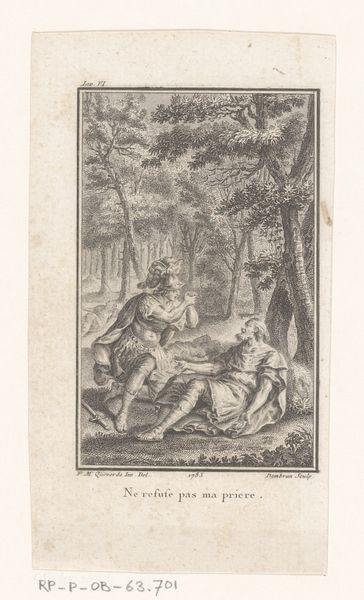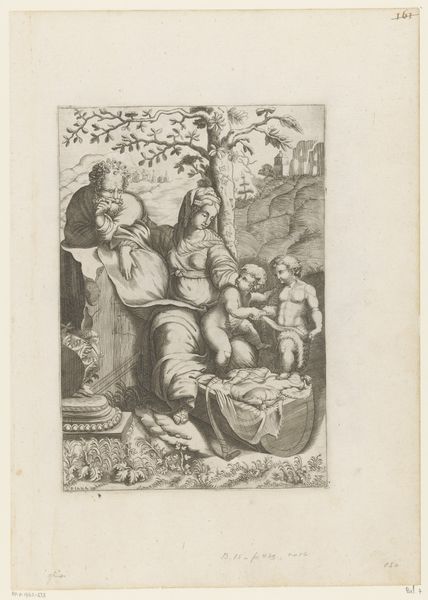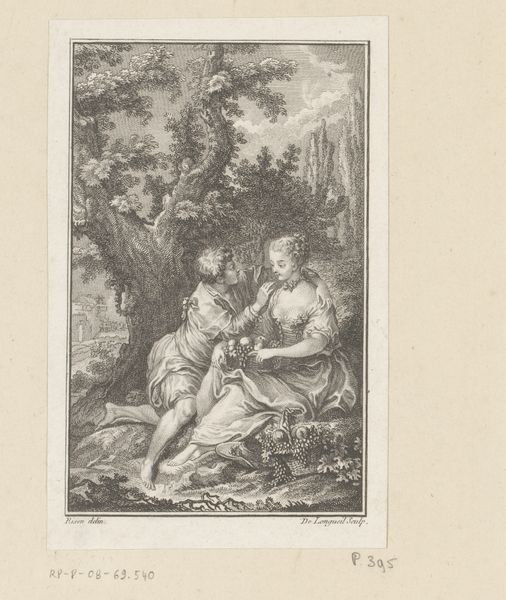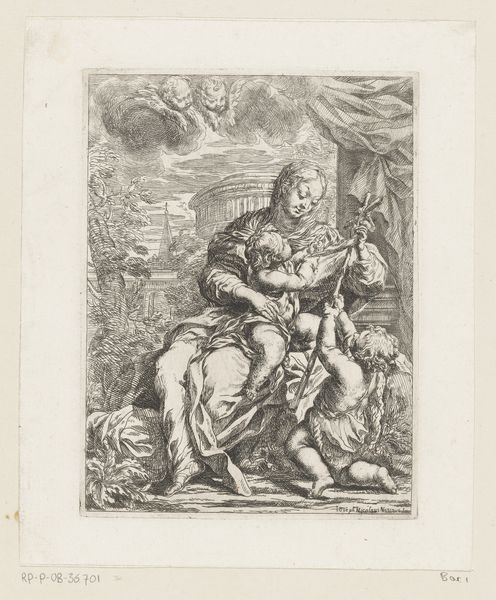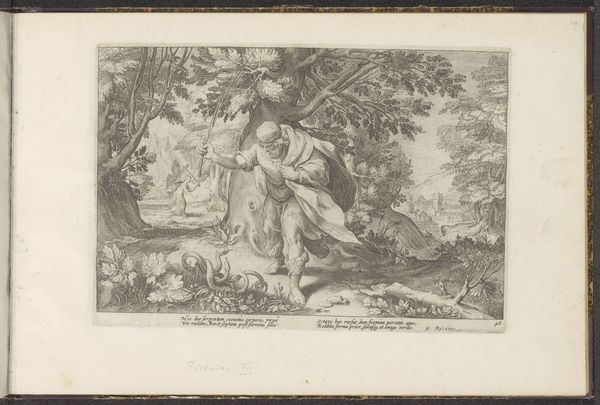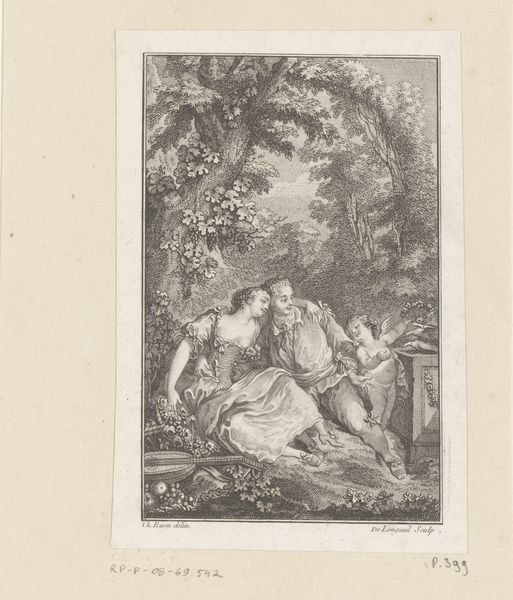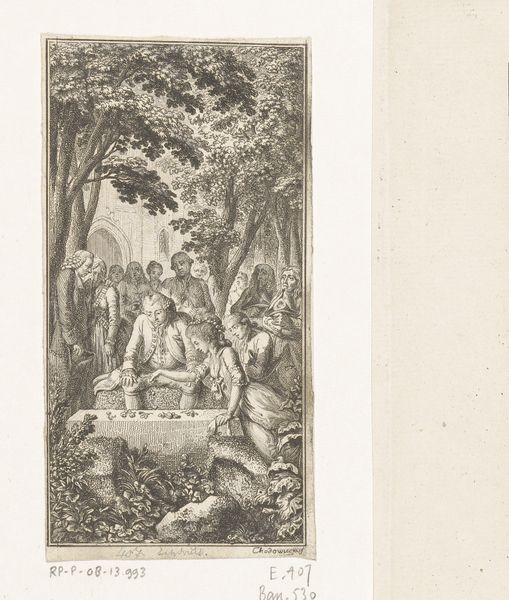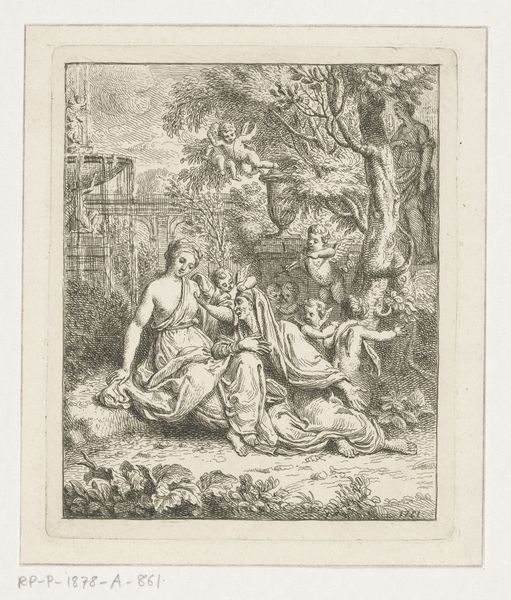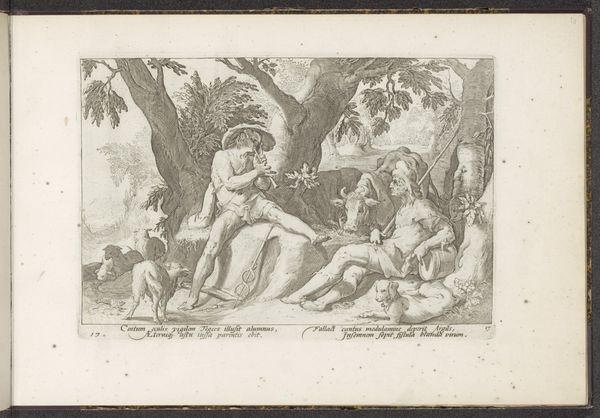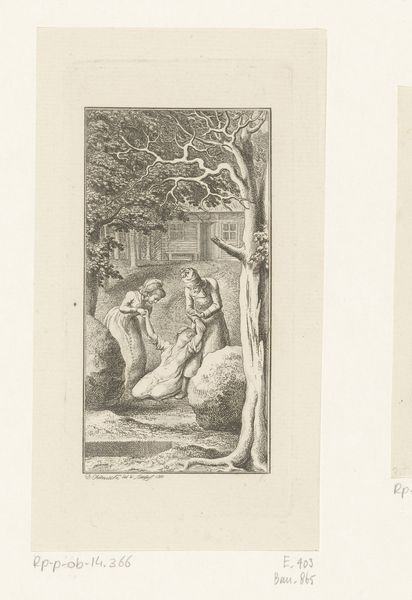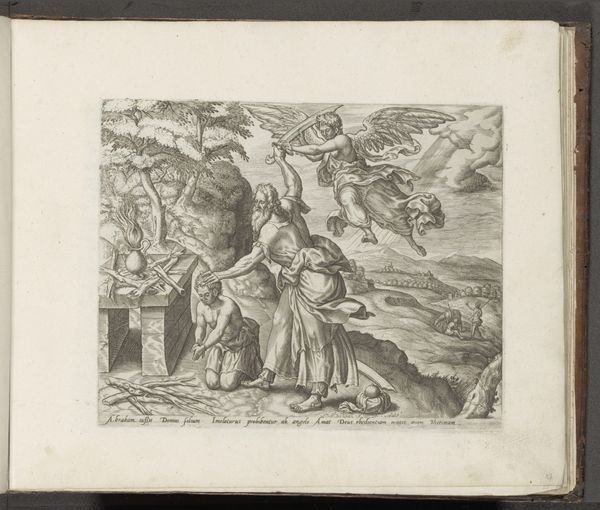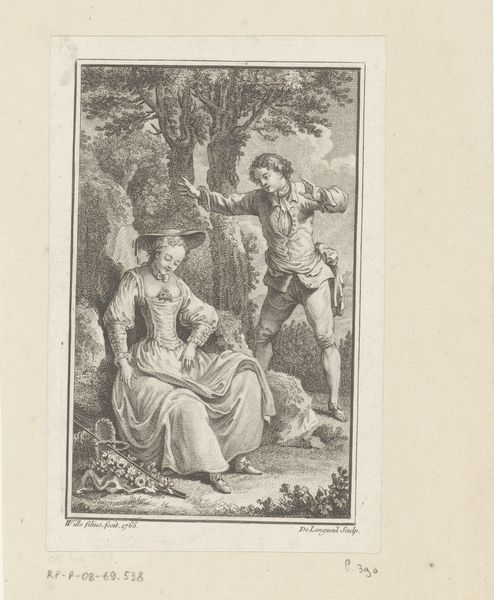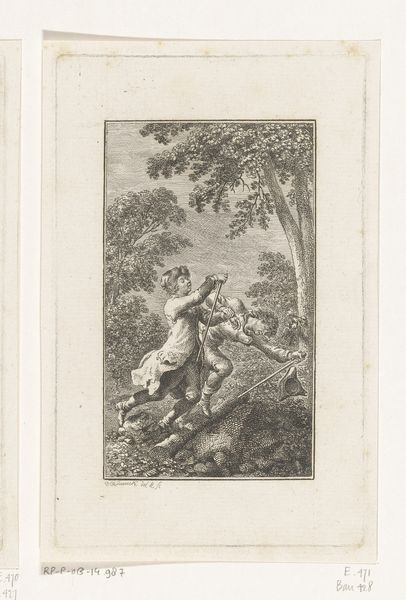
Dimensions: height 132 mm, width 90 mm
Copyright: Rijks Museum: Open Domain
Curator: Joseph de Longueil created this engraving titled "Man die gitaar speelt voor een vrouw," sometime between 1765 and 1792. What strikes you about this piece? Editor: Well, the initial feeling is almost theatrical. The lighting, the posture of the figures… it all feels like a carefully staged scene. And look at the landscape, it's quite detailed given the limitations of the engraving medium. Curator: I find it interesting how it captures this intersection between leisure and performance within the social structures of the time. Consider how gender and class dictate these roles – the man, the performer, actively engaging, while the woman is positioned as a passive recipient of his art. It hints at broader power dynamics. Editor: Absolutely. And consider the labor involved in producing an engraving like this. Each line meticulously etched, a process that’s both time-consuming and demanding. There's a direct link between the artist's physical work and the final image. I wonder what the cost of something like this would have been at the time and who had access to it. Curator: That is true, engraving facilitated wider circulation compared to painting. Also notice how Longueil, even within the Romantic framework, hints at the burgeoning shifts in gender roles and expectations through the nuanced interaction between his figures. The woman, while seemingly passive, gazes upward with an intensity suggesting deeper complexities. Her agency lies, perhaps, in the reception and interpretation of the music and the situation. Editor: A good point. The level of skill also plays a role. Creating gradations of tone and depth with just lines…it transforms a fairly common material, metal, into something almost lifelike. This act of transmutation, the process itself, speaks volumes. Curator: And thinking of art history, "Man die gitaar speelt voor een vrouw" acts as a conduit. The artwork allows us to unpack and investigate not only the artistic elements but also social codes and expectations regarding gender and class during its historical moment. Editor: Agreed. And it's in considering both the "how" and the "why" of such artwork that we get a more nuanced understanding of the art itself. I think a deeper exploration of printmaking could show a lot about social status, reproduction, and consumption.
Comments
No comments
Be the first to comment and join the conversation on the ultimate creative platform.
